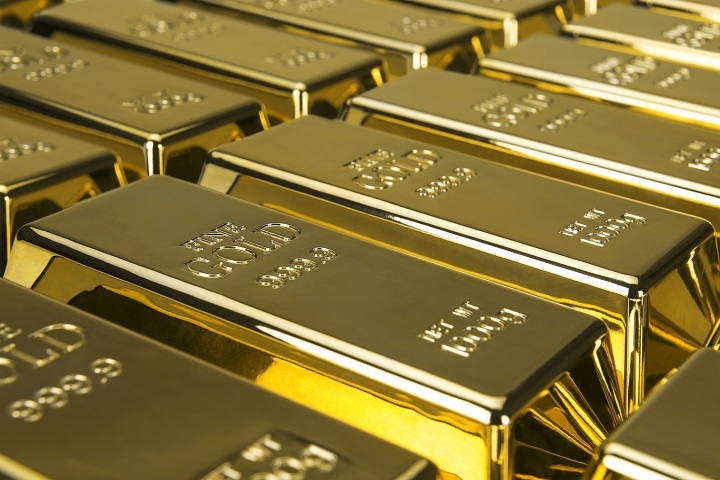Traders to be on alert for commodity complacency
 |
| Traders to be on alert for commodity complacency |
Which commodity sector continues to be most affected by the ongoing pandemic?
At the moment, it looks like precious metals and primarily gold are most affected. Now that the driving narrative in markets has shifted pretty decisively away from inflation and back towards economic growth, gold has dropped to areas familiar from December last year. If major central banks continue to become more hawkish and fears that tightening might cut recovery short don’t return, one can reasonably point to gold as having more room to fall. Nevertheless, uncertainty particularly over the timing of tightening monetary policy remains high.
Commodities look set to dominate as the world struggles to get back on its feet. Gold has thrived and the demand for crude oil is pushing up as economies try to recover. What are the main factors influencing the future of these activities?
Oil probably looks the strongest of major commodities and there is confidence and there have been a number of surprise draws in American inventories over the last few weeks. The breakdown of Iranian-American negotiations has meant that supply hasn’t surged as would probably have happened if sanctions were lifted.
Travel is slowly resuming and China’s economy has recovered strongly, so the outlook for demand looks good. In terms of technical, though, a price doesn’t usually move more or less constantly in the same direction for months on end: sooner or later it typically has to correct. Equally, as the price rises, the incentive for unconventional producers, primarily in the US, becomes ever stronger.
Looking at commodities in particular, there hasn’t been much change so far this year in the factors driving markets or individual traders and investors. More generally, though, it looks like the ‘hunt for interest’ is on. Monetary policy is almost certainly going to tighten more quickly this time around than in the aftermath of 2008, but the first hikes are going to be late next year at the earliest. In the meantime, DeFi, Crypto Earn, and similar schemes – plus of course shares paying relatively high dividends – remain in vogue.
The biggest question on investors’ minds is whether gold can continue its spectacular bull run that transpired in 2020. How do you see the trends moving?
While things look less rosy for gold than oil at the moment, this is partially a result of current sentiment being particularly ‘risk on’. No major central bank is going to have a base rate above 1 per cent until at least 2023 and even though attention has shifted away from inflation, it’s still there and it will probably continue rising in most countries.
The catalyst for another round of gains for the yellow metal could be negativity from senior members of the Federal Open Market Committee (FOMC), another significant rise in American, inflation, or just a shift in sentiment back to defensive assets. 2019-2020’s uptrend does seem to be over but there’s no clear sign that it has reversed into a downtrend: a range for gold between 2021’s highs and lows so far seems favourable for some months at least unless significant new information affects the market.
What is your advice for traders during high-risk periods, and how should they manage such risk when trading?
We do not advise traders for ethical and regulatory reasons. One tip I can give though is to keep trades small where reasonably possible during periods of higher risk and volatility. Always use a positive ratio of risk to reward, preferably at least 1:2. Picking higher probability scenarios with a good ratio, avoiding entry at extremes, and being ready to exit at fairly short notice as sentiment shifts or around key events are generally good practices. Now, though, they’re particularly important.
On the whole, volatility is much lower now than it was in March and April last year, so some traders are resuming longer-term activities and moving somewhat away from the very short-term trading that characterised much of 2020’s second quarter. This makes sense in the context, but complacency should still be avoided and traders should still be wary of ordering significant volumes around critical news and data such as meetings of the FOMC and others.
What the stars mean:
★ Poor ★ ★ Promising ★★★ Good ★★★★ Very good ★★★★★ Exceptional
Related Contents
Latest News
More News
- VIR hosting talk show on the stock market stability and sustainability (April 04, 2024 | 10:22)
- Stock market supported by diverse factors (March 14, 2024 | 16:46)
- SSC proposes new Information Disclosure System (March 04, 2024 | 09:09)
- Stock market offers promising opportunities as it enters bullish cycle (December 18, 2023 | 16:00)
- JB Securities Vietnam launches innovative securities trading platform Finavi (October 02, 2023 | 08:00)
- DNSE Securities takes lead in new account openings in Q2 (July 27, 2023 | 08:00)
- Major bourses to hail raft of fresh supplies (July 14, 2023 | 09:56)
- Securities firms falling short of business plans (November 24, 2022 | 21:35)
- Trading volumes increase in spite of money market jitters (September 28, 2022 | 10:00)
- Weighing stock market opportunities in H2 (September 21, 2022 | 19:21)

 Tag:
Tag:






















 Mobile Version
Mobile Version